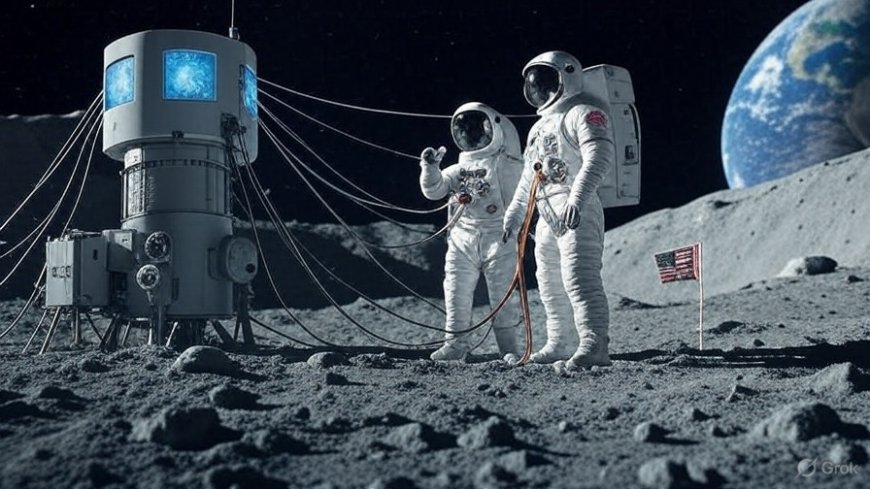Powering the Moon: U.S. Accelerates Plan to Build Nuclear Reactor on Lunar Surface by 2030
The U.S. is fast-tracking its plan to deploy a nuclear reactor on the Moon by 2030, enabling sustained lunar presence under NASA’s Artemis program.

In a bold step toward long-term space colonization, the United States is accelerating its plan to build a nuclear reactor on the Moon by the end of the decade. The project, led by the U.S. Department of Energy (DOE) in partnership with NASA and private aerospace firms, aims to deploy a compact fission power system on the lunar surface by 2030, a timeline significantly faster than previously projected.
This initiative, part of America’s broader ambitions under the Artemis program, is designed to support sustained human presence on the Moon and eventually serve as a blueprint for similar systems on Mars.
Why a Nuclear Reactor on the Moon?
Power is one of the most critical elements for any long-term mission beyond Earth. Solar power, while useful, is unreliable during the two-week-long lunar nights. A fission surface power system offers constant, reliable energy—something crucial for supporting habitats, experiments, and resource extraction technologies.
According to Jim Reuter, associate administrator for NASA’s Space Technology Mission Directorate, “A nuclear reactor on the Moon will be a game-changer. It allows us to think beyond short stays and explore sustainable living on another world.”
The Technology Behind It
The lunar reactor will use low-enriched uranium to produce at least 40 kilowatts of continuous power for 10 years—enough to sustain a small lunar base or crewed research outpost. The system is designed to be compact, robust, and capable of being transported via a lunar lander.
The reactor will be developed on Earth and tested in controlled environments before being sent to the Moon aboard a future Artemis mission. NASA has shortlisted several defense and engineering companies for prototype development, including Lockheed Martin, Westinghouse, and Intuitive Machines.
Timeline & Deployment
-
2026–2027: Final prototype selection and testing
-
2028–2029: Reactor build and environmental simulation
-
2030: Targeted delivery and deployment on the Moon
NASA confirmed the system will likely be installed near the lunar south pole, where upcoming missions aim to explore water ice deposits for future fuel and life-support systems.
Strategic Importance & Global Implications
This project is not just a scientific milestone—it’s a strategic move in space geopolitics. As China and Russia continue to make advances in lunar and Martian missions, the U.S. is asserting leadership in space infrastructure development.
Experts say nuclear energy will be essential for deep space missions and off-world colonies. Dr. Lori Glaze of NASA’s Planetary Science Division emphasized, “We are laying the foundation for real infrastructure in space. The Moon is our testing ground.”
Budget, Oversight & Safety
The DOE's Office of Nuclear Energy is managing the project with NASA oversight, ensuring rigorous safety standards. The project is part of a $5 billion space nuclear initiative approved under the latest U.S. federal budget. This includes reactor development, launch logistics, and lunar deployment planning.
While concerns about launching nuclear materials into space remain, officials point out that nuclear-powered missions—like the Mars rovers and Voyager spacecraft—have long used similar technology safely. NASA and the DOE are working with the U.S. Space Force to implement secure launch procedures.
Looking Ahead
The Moon may soon become more than a dusty research destination. With reliable nuclear power, lunar outposts could support robotic mining, 3D printing habitats, and act as refueling stations for Mars-bound missions. This could mark the dawn of a permanent human presence beyond Earth.
If successful, the U.S. will be the first nation to operate a nuclear reactor on another celestial body, redefining space exploration for generations to come.









